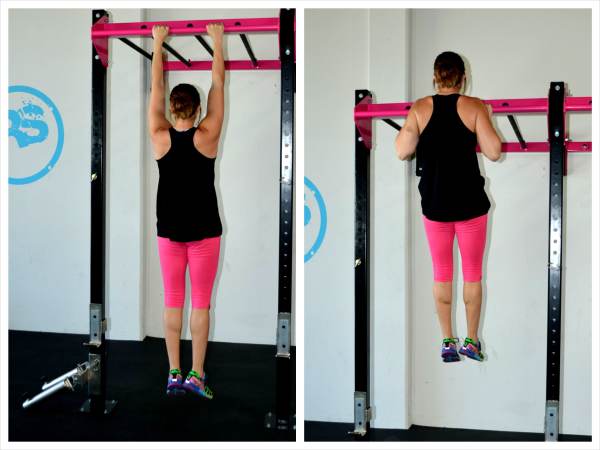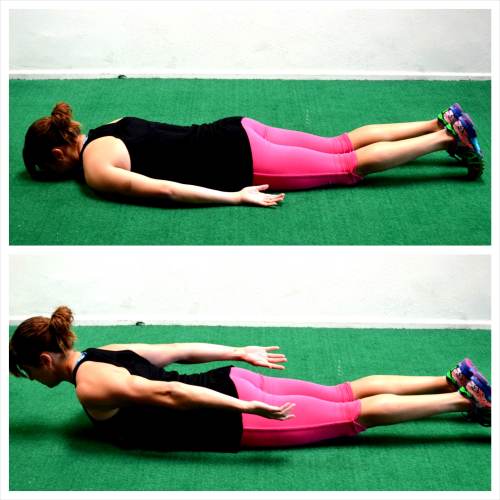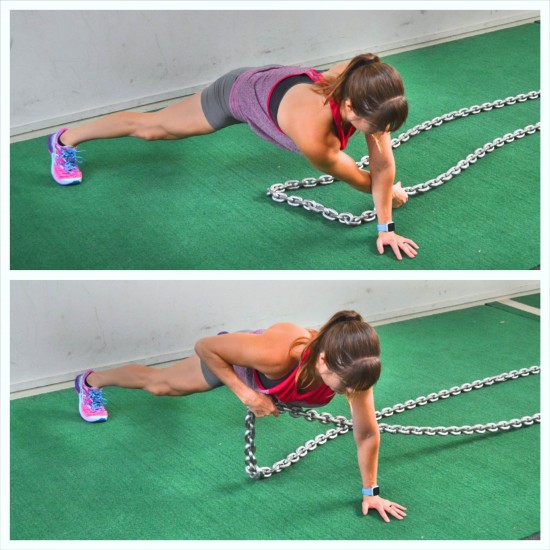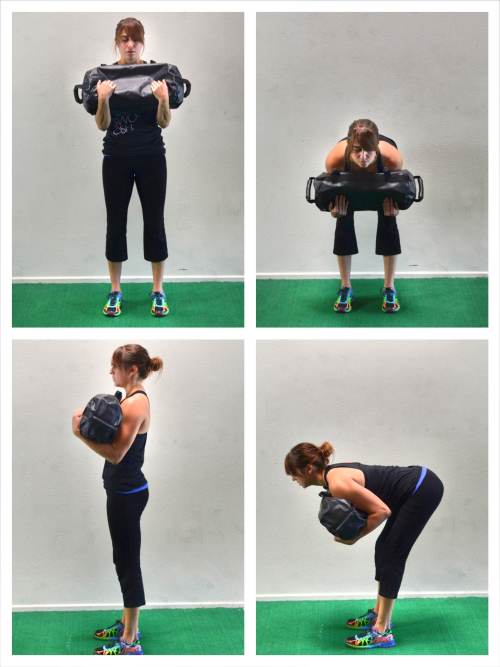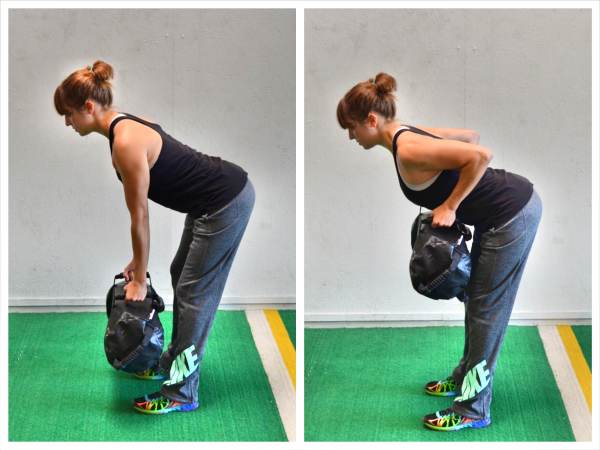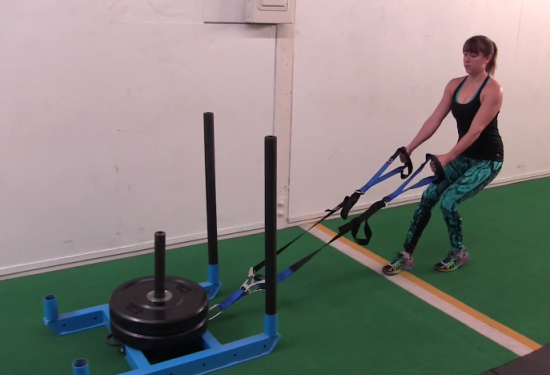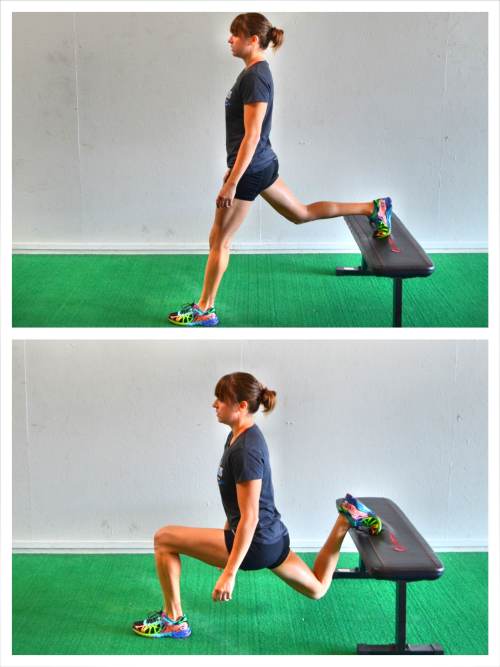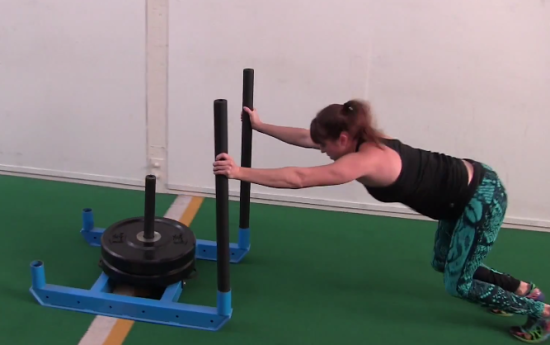
The 15-Minute Battling Ropes Tsunami Workout
WARM UP
Stretch and Roll Out:
Hips/Glutes
Back
Lats
Chest
Shoulders
WORKOUT
Complete 5 rounds of each circuit. Work for 20 seconds, rest for 40 seconds.
CIRCUIT #1:
20 seconds Basic Tsunami Wave
40 seconds of Rest
CIRCUIT #2:
20 seconds Sidewinder Tsunami Wave
40 seconds of Rest
CIRCUIT #3:
20 seconds Rainbow Tsunami Wave
40 seconds of Rest
COOL DOWN
Stretch and Roll Out:
Hips/Glutes
Back
Lats
Chest
Shoulders
NOTES:
To do any variation of the Tsunami waves in this workout, tie a 50ft (1.5 inch or 2 inch) rope to a pole. You want to just tie one end to an anchor point without losing too much of the length of the rope.
Beginners should definitely use a 1.5 inch rope while more advanced exercisers may want to try a 2 inch rope. However, if you just have an 1.5 inch rope, you can simply step in and keep more slack in the rope to make the moves harder.
Work as hard as you can for the 20 seconds and recovery in the 40 seconds so you an do the exact same amount of work the next round. Beginners may need to do fewer rounds of each circuit and rest longer, making this workout potentially a bit longer than 15 minutes.
EXERCISE DESCRIPTIONS:
Basic Tsunami Wave – Attach the end of a 50ft rope to an anchor point without losing too much of the length of the rope. Holding the rope in both hands, squat down just a little with your arms straight down. As you quickly jump up, pull your arms up toward the ceiling. Then snap your arms back down as you land. Small quick hops with a slight hinge as you raise and lower your arms to create quick small waves. You aren’t trying to jump high off the ground. You are just hopping an inch off the ground and stomping your feet right back down to help you generate more power and not just depend on your arms. Everything should move quickly together.
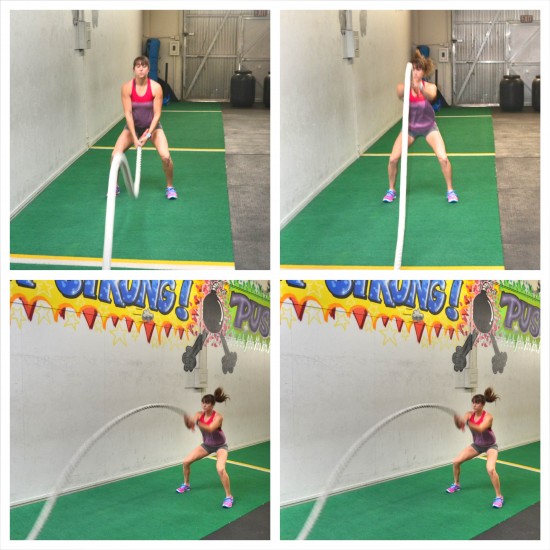
Sidewinder Tsunami Wave – Attach the end of a 50ft rope to an anchor point without losing too much of the length of the rope. Keep more slack in the rope than you would with other battling ropes moves. Relax your arms, holding the rope in both hands, and stand with your feet between hip-width and shoulder-width apart. Bend your knees slightly and hinge slightly forward. Do not let your back round. Keep your chest up nice and tall. Then sweep your arms to the right, rotating through your core and pivoting your back foot. Then quickly sweep your arms to the left. Sweep back and forth. Keep your arms more relaxed and only slightly bent. Use your core to push and pull from side to side. You shouldn’t do huge rotations. Your arms and the rope should stay out in front of you. The rope should make snake-like waves on the ground and swish side to side.
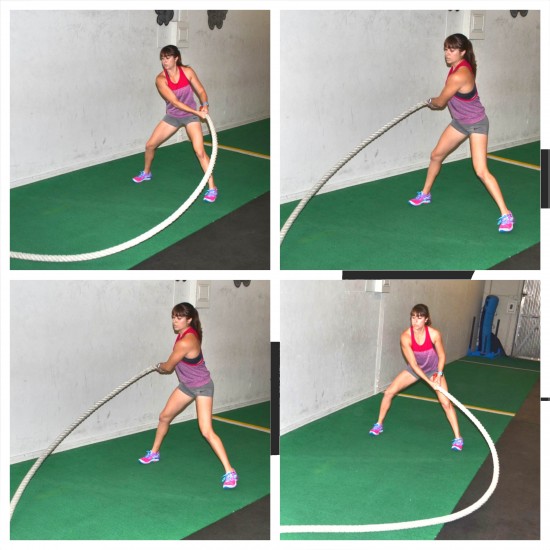
Rainbow Tsunami Wave – Attach the end of a 50ft rope to an anchor point without losing too much of the length of the rope. Pull the rope out straight then take a step or two in. Hold the rope with both hands with the handle facing up. Bring your hands and the rope down outside your right hip and pivot your left leg. Then pull the rope up and over toward your left hip. Pivot your right leg as you bring the rope to your left hip. Then arch back up bringing the rope up toward your shoulders than back down to your right hip. The rainbow is created as you arch from one hip up to your shoulders and back down to the other hip. Keep pivoting and rotating the rope from hip to hip, arching up toward your shoulders as you bring the rope from one hip to another.




